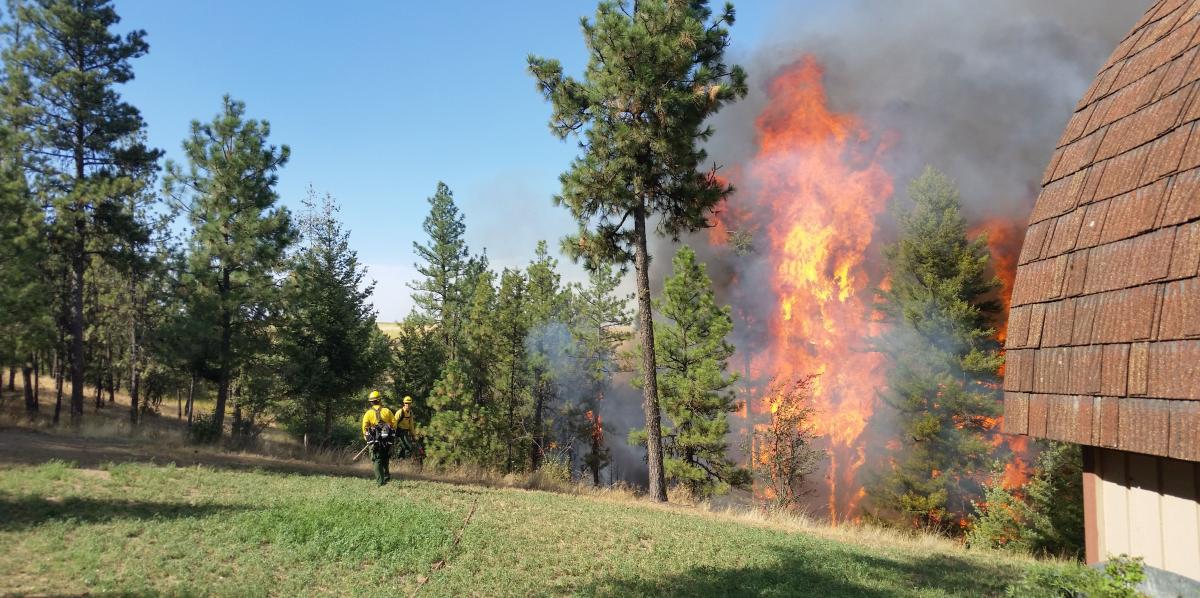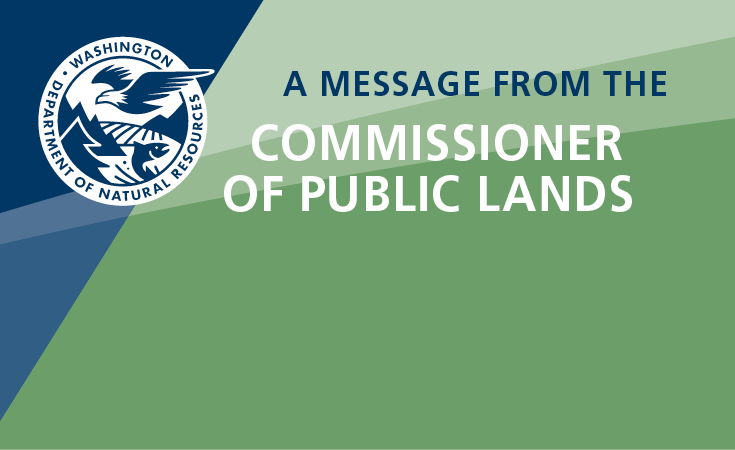Wildland Fire Protection Strategic Plan

Fundamental change is needed to reduce wildfire risks to people, communities and our environment and maintain Washington’s quality of life.
The Washington Wildland Fire Protection strategic planning process brought together leaders, partners, and stakeholders in wildland fire prevention, response, and community resilience to envision a new future for effective wildland fire management. View our summary and our plan for the WA Wildland Fire Protection Strategy.
Overview
Washington’s record fire seasons in 2014 and 2015 were devastating: the loss of life, homes, and structures; damage to fish and wildlife habitat and other natural and cultural resources; local communities suffering from a loss of visitors and revenue, and poor air quality. The state spent millions of dollars in direct suppression costs, and millions more were spent mitigating the social, cultural, and economic impacts from these fires. These seasons represent a trend of large, uncharacteristic wildfires that is expected to continue with no end in sight.
The state's Wildland Fire Protection Strategic Plan built a blueprint for effective wildland fire protection in Washington and informed associated policy and resource decisions. It followed the recent roll-out of the state’s 20-Year Forest Health Strategic Plan, which establishes a framework to systematically treat broad forest landscapes to improve forest health and reduce the risk of uncharacteristic wildfires. The plan is also anchored in the National Cohesive Wildland Fire Management Strategy and shares its focus on resilient landscapes, fire-adapted communities, and safe, effective wildfire response. Additionally, the plan focuses on wildfire prevention, reducing human-caused ignitions, and post-fire recovery.
Process and Outcomes
DNR invited representatives from federal, tribal, state, and local government; affected communities; fire service, emergency response, forest management, and conservation organizations; and private industry to come to together to chart a bold new path to improved wildland fire outcomes.
Through this process, we:
-
Identified a common vision and roadmap for improved wildland fire outcomes.
-
Promoted strategic and programmatic alignment among wildland fire management agencies and jurisdictions in the state, while recognizing our separate missions, roles, and responsibilities.
-
Fostered communication and collaborative engagement across the state to improve wildfire outcomes before, during, and after wildfire.
Past Events
Topical Workshops – Thursday, June 21, 2018 (Yakima) and Friday, June 29, 2018 (Cle Elum)
Topical workshops were convened to identify specific challenges, needs, and priorities for improving wildland fire outcomes for limited English proficiency communities (June 21) and for arid lands, rangelands, and unprotected lands (June 29, convened by the Arid Lands Initiative).
Topical workshops were convened to identify specific challenges, needs, and priorities for improving wildland fire outcomes for limited English proficiency communities (June 21) and for arid lands, rangelands, and unprotected lands (June 29, convened by the Arid Lands Initiative).
Wildland Fire Workshops – Tuesday, April 24, 2018 (Spokane), Tuesday, May 1, 2018 (Wenatchee) and Thursday, May 17 (Tacoma)
The workshops brought together wildland fire management practitioners, experts, and affected community members such as fire-adapted communities and Firewise communities to help refine the vision articulated in the Wildland Fire Summit and begin to develop goals and key strategies to improve our state’s wildland fire outcomes.
The workshops brought together wildland fire management practitioners, experts, and affected community members such as fire-adapted communities and Firewise communities to help refine the vision articulated in the Wildland Fire Summit and begin to develop goals and key strategies to improve our state’s wildland fire outcomes.
Wildland Fire Open House – Monday, April 23, 2018 (Spokane), Monday, April 30, 2018 (Wenatchee) and Thursday, May 17 (Tacoma)
The open houses provided an opportunity for community members to learn about and provide input on the strategic plan.
The open houses provided an opportunity for community members to learn about and provide input on the strategic plan.
Wildland Fire Summit - January 31, 2018 (Tumwater)
The summit brought together leaders, partners, and stakeholders in wildland fire prevention, response and community resilience to launch a comprehensive review of wildfire management in Washington. View the day's discussion and materials:
-
Opening remarks from Commissioner of Public Lands and State Representative Tom Dent (External link)
-
Presentation: Washington Wildfire Trends (PDF | Audio: 19 MB)
-
Presentation: Overview of Strategic Planning Process (PDF | Audio: 36 MB)
-
Panel Discussion: Vision for Washington Wildland Fire Management (Audio: 26 MB)
-
Panel Discussion: Foundations and Framework of a New Vision for Washington Wildland Fire Management (Audio: 54 MB


